Invisible In-The-Canal
(IIC)
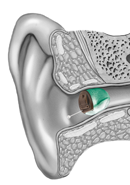
The smallest custom style, IIC instruments site invisibly in or past the
second bend of the ear canal. IIC are specifically designed for mild to moderate
hearing loss.
Completely-in-the-Canal
(CIC)
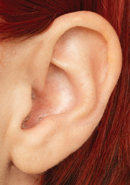
The smallest custom style, CIC instruments fit deeply and entirely within the
ear canal. They fit mild to moderate hearing losses and offer high cosmetic
appeal as they’re nearly invisible when worn.
In-the-Canal
(ITC)
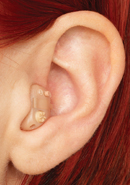
ITC instruments sit in the lower portion of the outer ear bowl, making them
comfortable and easy to use. Because they’re slightly larger than CIC models,
they have a longer battery life, and can host additional features such as
directional microphones for better understanding in noisy environments, and
controls such as volume controls. They fit mild and moderate hearing
losses.
Half Shell
(HS)
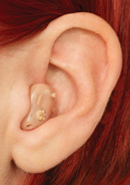
Half shell models fill half the bowl of the outer ear. Like ITC models, their
size enables the addition of features such as directional microphones, volume
controls and push buttons to activate special settings for different listening
environments. Because of their size, they may be easier than smaller models to
handle for some people and yet are still often disguised by hairstyles or
sideburns. This hearing aid style looks similar to the ITC hearing aid when worn
on the ear, but is slightly larger.
Full Shell or In-the-Ear
(ITE)
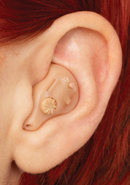
Full shell models sit flush within the outer ear bowl. Their size allows the
maximum number of additional controls and features such as directional
microphones, which require space on the outer portion of the instrument. They
use a larger battery size than the smaller styles, and can fit a larger receiver
with enough power for even some severe hearing losses. Because of their
flexibility, they’re widely recommended for mild to severe hearing loss.
Behind-the-Ear Styles
Behind-the-Ear (BTE) models sit behind or on top of the outer ear, with tubing or wires that route sounds down into the ear that connects to an ear tip or earmold to secure them in the ear canal. BTEs come in colors to blend with hair or skin tones, and even chrome colors, leopard print and other funky designs to suit personal styles. Different BTE sizes accommodate different features,
controls, battery types and degrees of power (larger instruments generally have more power than smaller ones). While many people choose discreet BTEs that are unnoticeable when worn, others are tempted to show off the cool designs.
Mini BTE with slim tube and tip
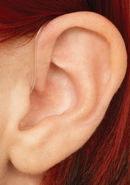
Mini BTEs are designed to hide behind the outer ear, and have ultra-thin
tubing to discreetly route sound into the ear. The tubing connects to a soft tip
that sits in the ear canal but doesn’t occlude it. The result is a natural, open
feeling as airflow and sound enter the ear naturally around the tip, while
amplified sound enters through the tip. This is known as “open fitting” and is
recommended for mild to moderate high frequency losses.
Receiver in the canal
(RIC)
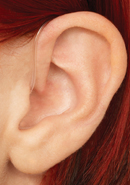
RICmodels, also known as RITE (receiver-in-the-ear) models, are mini BTEs that
have the speaker of the instrument incorporated in the ear tip, instead of in
the main body of the instrument. RITE instruments fit mild to severe hearing
losses. This hearing aid style looks similar to the Mini BTE when worn on the
ear.
BTE with earmold
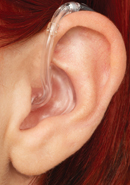
BTEs with earmolds fit mild through profound hearing losses. Their longer
shape follows the contour behind the outer ear and can house many features such
as a program button and volume control. The earmold color and style, as well as
the wearer’s hairstyle, determine exactly how they’ll look on each
person.










